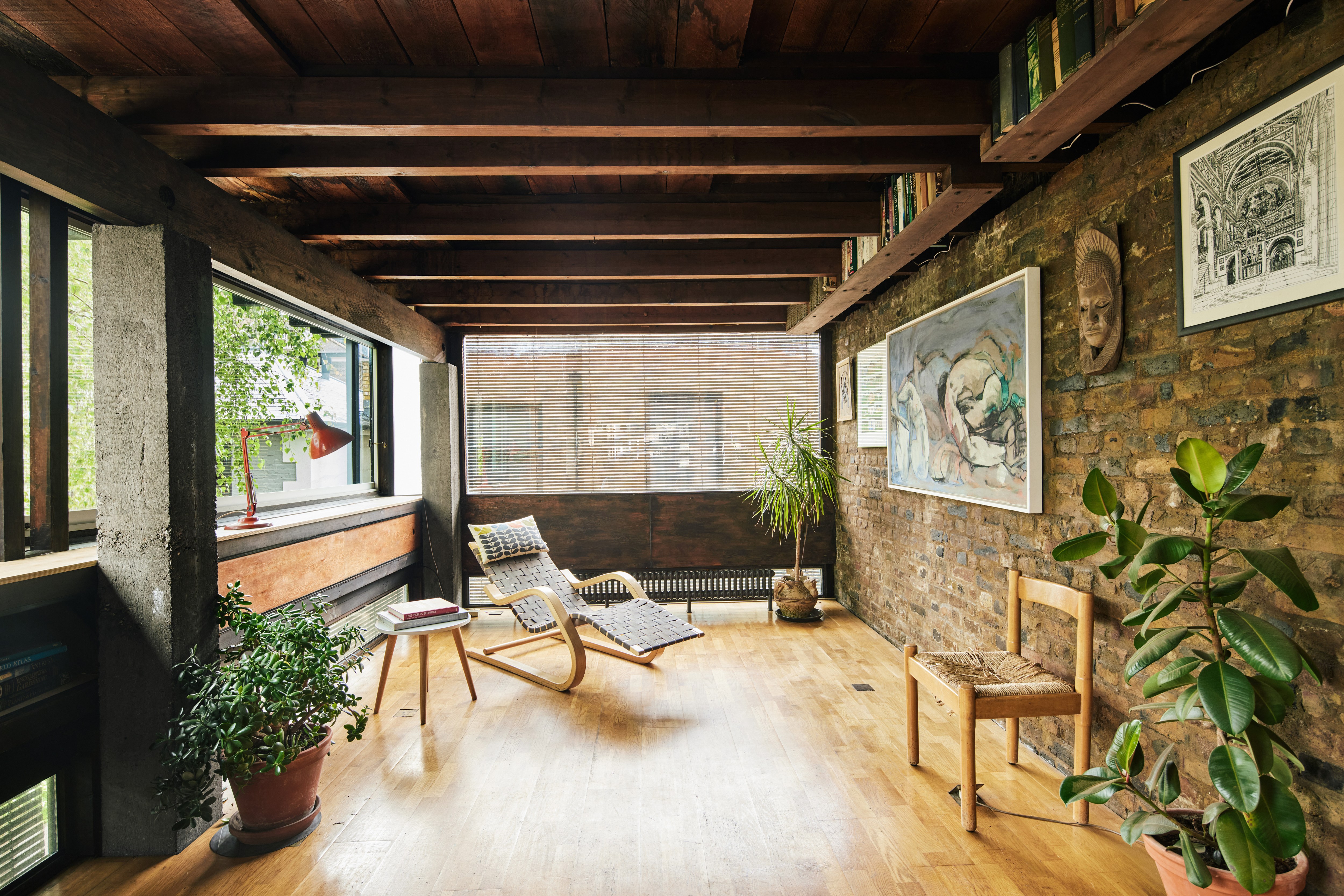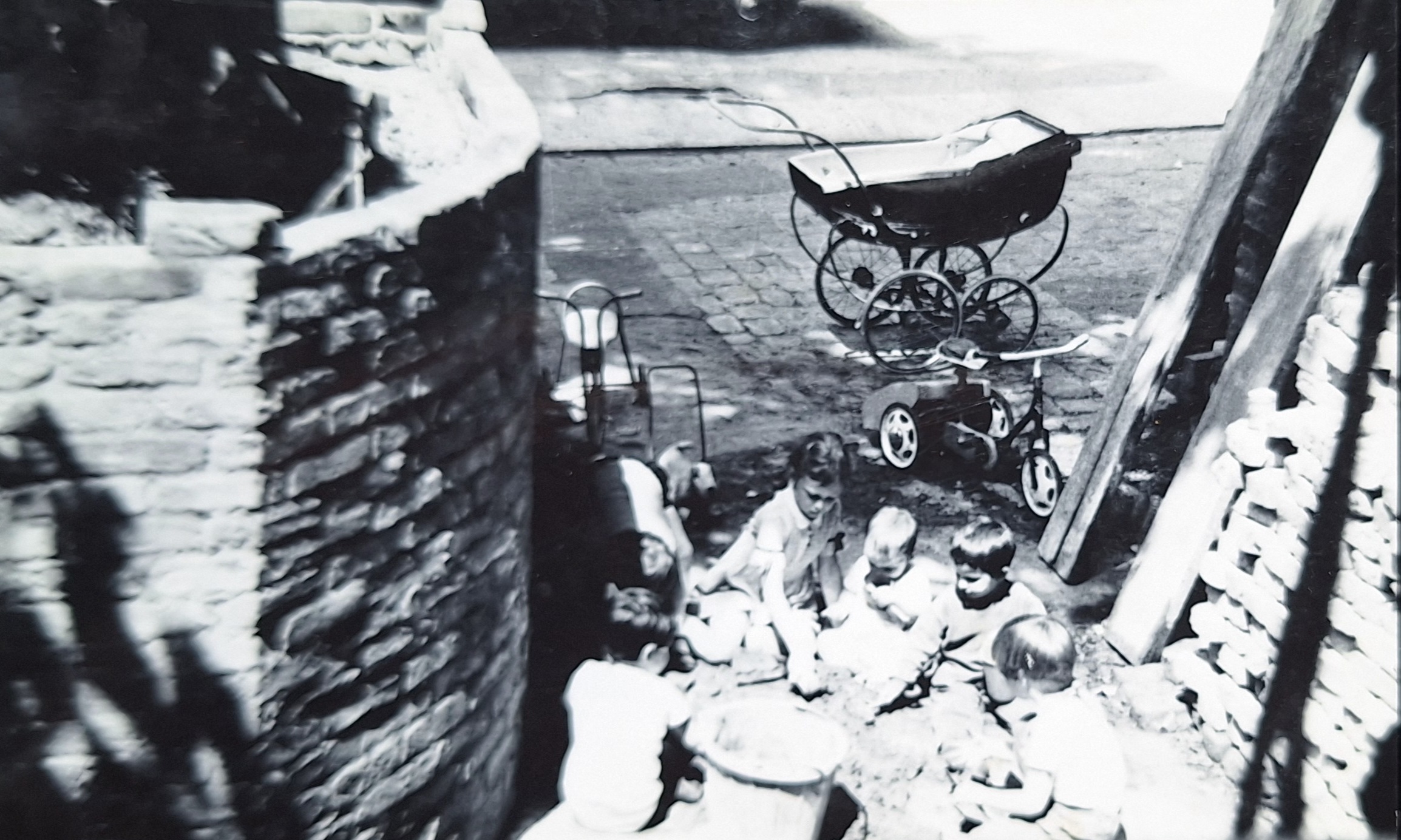The architect Ted Cullinan and his wife, Roz, bought an empty plot in the cobblestoned Camden Mews, northwest London, in 1961, at a time when the neighbourhood vibe was “light industrial”, according to their eldest child, Emma — chock-full of car repair shops and architectural practices.
This was one of Cullinan’s early self-build projects, which would result in a home “that allowed family life to flourish and many conversations to flow over mountains of home-grown veg and copious merlot”, he wrote.

Once the couple had secured planning permission from the council, the house was built on the weekends (enlisting help from friends and family) from a mixture of timber, brick and concrete between 1961 and 1964. Many of their mews neighbours were also architects, including Denis Gailey and his then wife, Alice Mylo (a planner). The couple designed the adjoining house (No 64) as a family home at the same time. The architect Max Honigsfeld also designed a home at No 72.
“Dad pushed and pushed for this design — it hasn’t followed the usual Victorian vernacular in the mews,” Emma says. She and her younger sister, Kate (a fashion designer), were born before the family moved there in 1964, while their brother, Tom, a musician who runs an arts space, was born at the property. “It was all hands on deck. [The house] was still being built around us. We’ve got photographs of Dad up a ladder and us just going around the building site as toddlers with our trowels.”

Cullinan’s family home was pioneering: an early example of a passive-solar house. Its south-facing aspect means it gains heat and light from winter sunlight (dappled thanks to its silver birch in front) while overhangs shield it from solar gain and glare caused by high-summer sun. The design incorporates salvaged blue bricks from a Denys Lasdun project he worked on at the Royal College of Physicians.
Advertisement
Emma notes its upside-down layout — with the bathroom and three bedrooms (lit by clerestory windows, influenced by the Swiss-French architect and designer Le Corbusier) on the ground floor, while the first floor was dedicated to an open-plan kitchen/dining space running more than 40ft from east to west — was decried as “weird” by her visiting schoolmates. But she has happy memories of growing up in the warm, convivial atmosphere, recalling playful touches such as a swing in the kitchen while a letterbox allowed the Sunday papers to slot straight into her parents’ bedroom. Sometimes, as teenagers, the Cullinan children would sleep out on the studio roof-cum-terrace.

“There were five of us, and upstairs the open-plan living area was a communal, familial [type of] living. The space feels really generous. Back then, Mum and Dad were incredibly sociable. People were always coming round. At that time, Camden Town was full of architecture practices such as ABK and Richard McCormack,” says Emma, a former journalist, now a psychotherapist who runs Kentish Town Counselling.
Light, courtesy of three sides of glazing, fills the open kitchen-diner. “It was a great party house — we’d all have dinner on the terrace during summer. Dad would discuss architecture over dinner for hours. He was often bringing his architect colleagues back from work. He was always talking about the importance of design. How design affects the way we feel was instilled in us,” she says.

The 944 sq ft property was grade II* listed in 2007 and is described as an example of “romantic pragmatism”, a term coined by the architect and writer Peter Davey. This style weaves together influences such as Arts and Crafts and early-modern pioneers, including Frank Lloyd Wright and Rudolf Schindler, two architects that Cullinan became familiar with in the United States.
Cullinan founded his practice, Edward Cullinan Architects (now Cullinan Studio), in the 1960s. He studied at the University of Cambridge and the Architectural Association School of Architecture in London, and was awarded the Royal Institute of British Architects royal gold medal in 2008.
Advertisement



For his first project, Cullinan designed and built the upper level of Belle Tout lighthouse on a clifftop near Beachy Head in East Sussex (above Birling Gap beach), constructing it between 1955 and 1956 with help from his father, Edward. His parents had bought it on a cheap lease from Eastbourne council on condition they restore it. “The original building, constructed in the 1830s by Hallett, had been ruined by Canadians doing target practice nearby,” Emma says. “Dad’s design was influenced by Le Corbusier’s chapel at Ronchamp in France, which Dad had cycled to previously.”
Cullinan also designed and constructed a studio house in Hampshire in 1960 for Lord Horder, his uncle, and another creation, the Marvin House in California, made from concrete and redwood, was also completed in 1960.
The house has been little changed since its completion, although during the 1980s, Roz, who was a researcher, “took it upon herself to get rid of the concrete kitchen”, replacing it with a wooden version created by the carpenter Matt Marchbank. “It is pretty much as it was,” Emma says.
Cullinan died in 2019 aged 88. Roz stayed in the house for a time and died in 2021. “Family reasons” mean the children have put it on the market with the design-led estate agency The Modern House. “It’s really sad to see it go,” Emma says.
£1.3 million, themodernhouse.com





